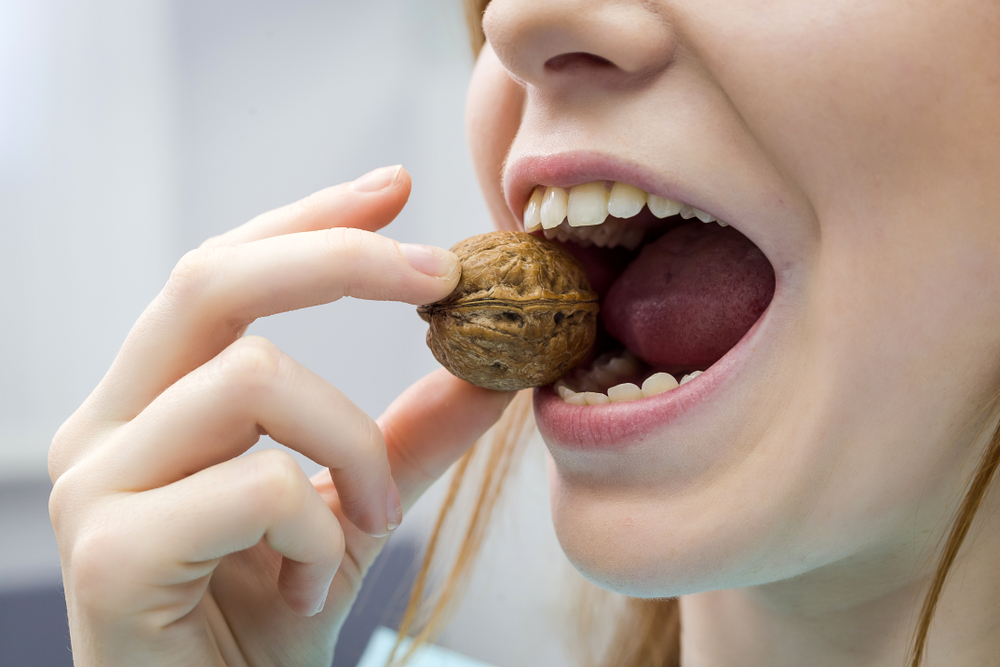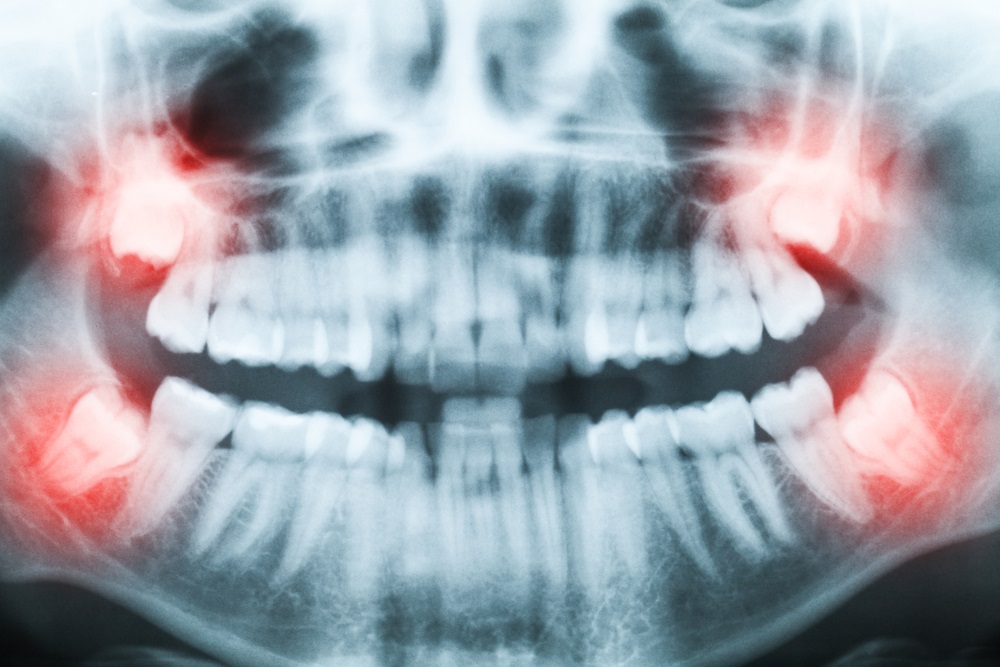- Teeth grinding is the leading cause of cracked tooth syndrome (CTS).
- Pain ranges from relatively mild to, in certain advanced cases, practically insufferable.
- CTS is one of the toughest dental issues to treat, and many dentists are not adequately trained to spot it.
- It is the third leading cause of tooth loss in the United States.
What is cracked tooth syndrome?
Cracked tooth syndrome (CTS) is just as its name implies: a cracked tooth, often but not exclusively found in the mandibular molars towards the back of the jaw.
CTS can be quite painful, with the degree of discomfort dictated by the depth and size of the crack and the affected tooth’s location. Pain typically occurs when eating certain foods or biting down in a specific way, essentially flexing the cracked tooth in the “wrong” direction. It can also be brought on by exposure to particularly hot or cold temperatures.
In its early stages it’s possible not to experience any pain from CTS whatsoever, although inevitably, if not diagnosed and treated, the pain will be forthcoming.
What makes cracked tooth syndrome so hard to diagnose?
In the context of CTS, a cracked tooth is defined as an incomplete fracture in a vital posterior tooth that involves the dentine and occasionally extends into the pulp.
It can be extremely challenging for dentists to determine exactly where the fracture is located — in some cases these cracks are so minuscule they can’t be detected by X-rays alone, and advanced oral examination techniques are required.
Since dentists generally don’t employ these techniques over the course of a basic dental check-up, cracked teeth often remain undiagnosed. By the time patients are feeling enough pain to warrant any of these tests, their CTS will have already advanced to a stage where treating it will likely be more complicated.
Inadequate training
Clearly not your standard variety broken tooth, the condition “cracked tooth syndrome” was labelled as such in 1964 by Caryl E. Cameron, who at the time described it as pain originating from a hairline or incomplete fracture of the tooth.
In his first published article on the subject, Cameron wrote “although many dentists are aware of cracked teeth, it is seldom covered in textbooks and has not been brought to the attention of students. The most important [factor] in its diagnosis is an awareness of the problem.”
According to experts, the situation hasn’t changed much since 1964. A significant percentage of dentists currently practicing in the United States are not properly trained on how to identify CTS. Even though it’s alleged to be the third leading cause of tooth loss after periodontal disease and caries, the condition is rarely afforded the attention it arguably deserves in most dental schools.
As such, many dentists practicing today are ill-prepared to identify the often well-hidden cracks commonly associated with CTS.
And, of course, so long as the immediate source of the pain remains elusive, an accurate diagnosis is impossible, and by extension, so is determining a viable treatment.
What causes cracked tooth syndrome?
Heavily restored teeth and those with extensive decay are particularly subject to CTS. It can also stem from accidentally biting into something unusually hard, such as a piece of bone in a steak dinner or a surprise avocado or olive pit in a salad. Ultimately, however, the most common culprit responsible for CTS appears to be nightly teeth grinding over an extended period of time.
As a general rule, teeth with large fillings or that previously underwent root canal treatment are more likely to crack because they tend to be weaker than other teeth. This is due to the absence of pulp, which acts as an alarm when the tooth is biting down on something hard, making the mouth open voluntarily.
Also, once people reach age 50 their teeth tend to weaken, leaving them more vulnerable to cracked tooth syndrome.
Another thing dentists take into account when attempting to diagnose CTS is that a person with one cracked tooth is more likely to have other cracked teeth, either simultaneously or that will be developing in the future. All the more reason to cover root canal-treated teeth with crowns, protecting them from potential fractures or cracks.
Can a cracked tooth or hairline fracture heal on its own?
If it’s only an enamel line fracture, meaning strictly on the outer level of the tooth, then it could possibly heal on it’s own via remineralization.
Remineralization is a process where certain minerals found in saliva and water (particularly fluoridated water) rebuilds the depleted enamel, and by extension the cracked tooth itself.
That said, it’s unlikely a surface crack like this would be diagnosed as CTS. Any tooth cracked to the extent that it’s causing the level of discomfort generally associated with the condition will be deeper than a surface crack in the enamel that could potentially heal itself.
Regardless, even if you only had a small surface crack that might possibly heal on its own, you’d still need to schedule an appointment with your dentist to confirm self-healing is indeed possible and that you won’t need any additional dental work.
How is cracked-tooth syndrome diagnosed?
Blunt trauma aside, a cracked tooth usually develops over a period of time, gradually deteriorating to the point where it becomes a source of discomfort — although it can remain harmless and asymptomatic for many years.
As stated earlier, the great challenge for dentists when diagnosing CTS is finding the crack in question. Sometimes, in the case of superficial cracks, the fracture might be visible to the naked eye. It’s when the cracks are minuscule and possibly hidden (often under previous dental work, like fillings) that they become problematic. And if the crack happens to be in a tooth that already has a crown, as is often the case, locating it becomes that much more difficult.
When diagnosed in its early stages the treatment to repair the tooth can be rendered more conservatively, and ideally, before any symptoms become apparent. By the time patients begin noticing symptoms, however, such as a sensitivity to cold drinks or sharp shooting pains when biting into food, it’s usually too late for the more subtle treatments to be effective, and more aggressive treatments will be required to resolve the issue.
Being able to provide your dentist with a complete dental history is helpful to the diagnosis process. When trying to identify the offending tooth or quadrant in question, the ability to access a patient’s dental records could possibly indicate a previous unsatisfactory procedure that might have left them with an undiagnosed cracked tooth.
Oral examination techniques
One way to discover and diagnose a cracked tooth in its early stages is to conduct routine methodical examinations of the teeth with a dental microscope. Other tools that aid in the diagnosis of cracked tooth syndrome include transillumination, bite sticks, cone beam (3D) X-rays, and vitality testing.
Employing a wand or handpiece equipped with a fibre-optic light is an effective tool in the effort to detect elusive, well-hidden cracks. When held horizontally at the gingival sulcus in a dimly lit space, the fibre-optic light can illuminate a problem crack to the point where it becomes visible.
Methylene blue dye is one more tool that can sometimes be helpful. The dye needs be applied to the occlusal surface of the tooth with a cotton roll or cottonwood stick, at which point the patient needs to bite down and move from side to side. Once the excess dye has been removed further inspection might reveal the fracture in question.
Bite sticks are yet another valuable tool from which to diagnose evasive tooth cracks. The stick is simply placed over each cusp while patients are instructed to bite down hard. Should patients feel pain once the pressure of the bite has been released, it’s a good indication the location of the crack has been found.
Finally, vitality testing of the tooth pulp should be conducted to reproduce the patients’ symptoms and ideally confirm the diagnosis.
How is cracked tooth syndrome treated?
Cracked teeth are treated in a variety of ways, depending on the overall condition of the tooth itself, where the crack is located, and how deep and large it is.
It’s important to remember that in some cases symptoms will persist even after treatment — usually in instances when a root canal and a crown has been required, as they are in approximately 20% of all CTS cases. Root canals are necessary if the crack affects the center of the tooth (the pulp), where nerves and blood vessels are located.
In these instances, when a root canal has been part of the treatment equation, the tooth will no longer be sensitive to changes in temperature but might still respond negatively to pressure put upon it. While this is a relatively common concern, it’s by no means inevitable, and should it turn out to be your situation you can take comfort in the knowledge that the pain will be considerably less intense, and the occasions when you feel it far less frequent.
Should you have a crack only affecting one or more cusps of a tooth (the highest point of teeth) the situation is usually addressed with a crown.
Other times, if the crack is affecting the root of the tooth in the jaw, the only effective solution is to remove it. Of course, the damaged tooth can be replaced with an implant or bridge.

How can you prevent cracked tooth syndrome?
Given how bruxism (teeth grinding) is the way the majority of people develop cracked tooth syndrome, the obvious answer to this question is to simply stop doing it. There is no shortage of methods to reduce or eliminate, if not the grinding itself, then at least the negative repercussions resulting from the habit.
Ask your dentist to fit you with a mouth guard that will protect your teeth from grinding while you sleep.
If stress is responsible for your grinding, then starting an exercise program, seeking out stress counselling, learning relaxation exercises, and even taking certain muscle relaxants can help reduce stress and the nightly teeth-grinding sessions that accompany it.
Other techniques to reduce bruxism involve limiting one’s caffeine and alcohol consumption, not chewing gum — or any non-food items (for example, your pencil) — and learning a wide variety number of exercises designed to help reduce grinding your teeth every night.
Also, should you play contact sports, always wear a mouthguard to protect your teeth from cracking in the first place.
Finally, good dental hygiene goes a long way to keeping teeth strong and healthy, subsequently making them more resistant to cracking.
How much does it cost to treat cracked tooth syndrome?
The dental fees to treat cracked tooth syndrome vary dramatically based on a series of factors, including but not limited to: geographic location, participation in insurance plans, and whether you’re being treated by a specialist or family dentist.
Another factor to consider is the size and location of the crack, and finally, what’s required to repair the affected tooth. For example, if a root canal is necessary the final price will obviously be higher than if a comparatively simple tooth extraction is all that’s needed to remedy the condition.
As a rough guide to current (2018) average dental fees in the United States, the following associated procedures involved to address CTS cost approximately:
- $175–$250 for a tooth extraction
- $150–$1,200 for dental bonding (the notably wide disparity in price is based on the complexity of the procedure)
- $1,000–$1,500 for a crown
- $500–$2,000 for a root canal, depending on where the tooth is located
Next time you visit your dentist ask them what they know about CTS and if they could conduct the necessary procedures to see if you already have, or are vulnerable, to the condition.
The pain, expense, and hassle of CTS is largely avoidable, after all — so long as your dentist knows what it is and how to look for it.









